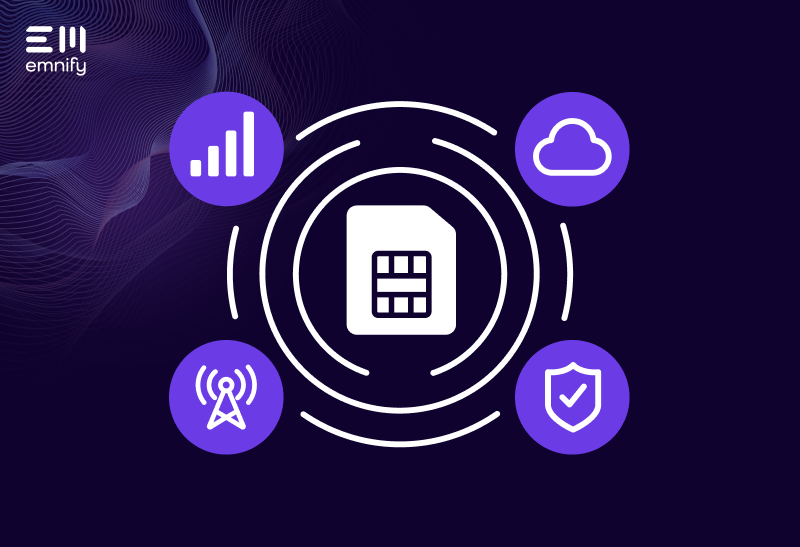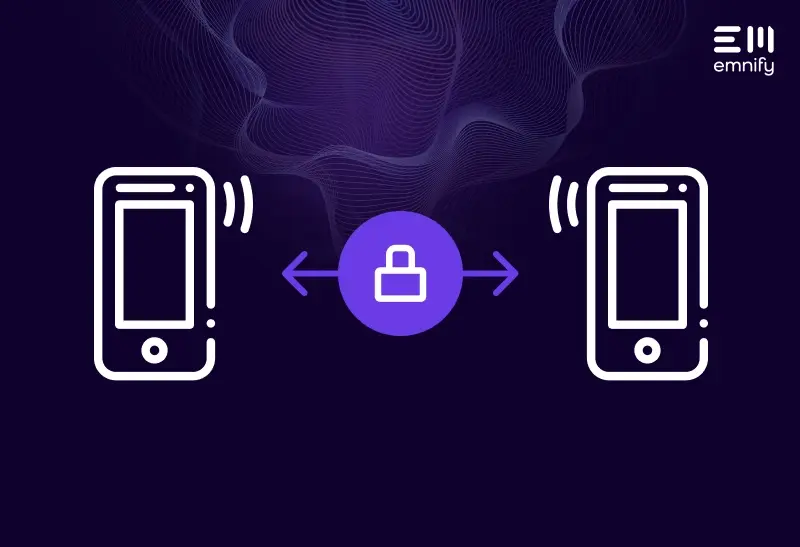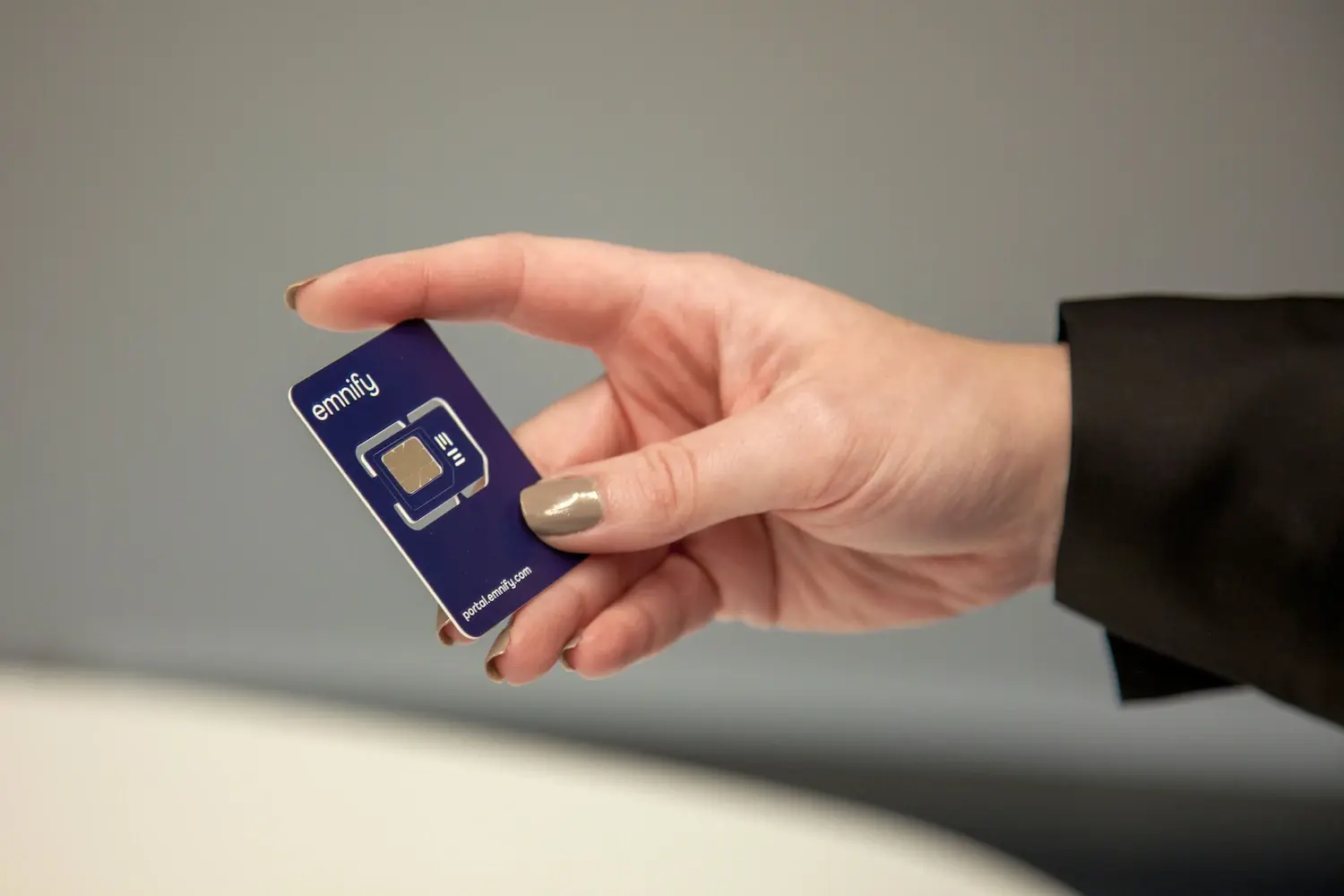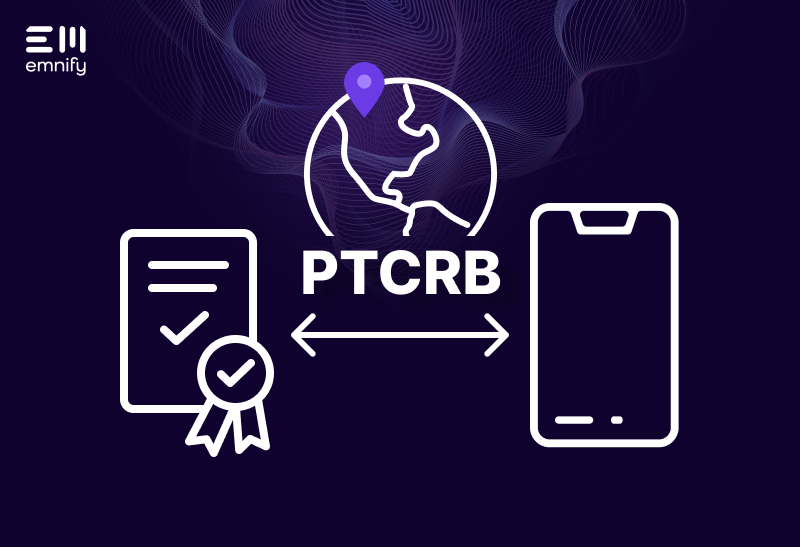

Quick definition: PTCRB is a certification program for wireless devices in North America. Established in 1997, the program ensures that devices comply with North American telecommunication standards. PTCRB used to be an acronym for PCS Type Certification Review Board, but the name no longer stands for anything.
Members of the PTCRB facilitate tests according to the certification program. The Cellular Telecommunications Industry Association (CTIA) manages and supervises PTCRB certification. Once a cellular device passes the necessary tests, one of three reporting bodies (CTIA, TÜV SÜD, or TAF) will assign it an International Mobile Equipment Identifier (IMEI), which tells North American cellular operators that the device is PTCRB certified (and therefore compatible with their network).
Note: Operators often have their own unique certification process as well. Your device needs to pass this certification in addition to PTCRB to access that operator’s network.
In this article, we’ll explain why PTCRB certification is crucial for manufacturers of cellular devices, how the PTCRB certification process works, and a list of devices PTCRB certifies.
What is PTCRB certification, and why does it matter?
PTCRB certification ensures your wireless devices are compatible with North American cellular networks.
Without PTCRB certification, you can’t market your cellular products in North America. Whether your devices will rely on 2G, 3G, 4G LTE, NB-IoT, Cat-1, or 5G NR, this stamp of approval tells North American Mobile Network Operators (MNOs) that your device uses the proper bands, protocols, and technology to work with their networks.
If you have a PTCRB certification, it will be reflected in the TAC of your device’s IMEI number, which cellular networks use to identify devices that have been approved to access the network. Carriers may block devices by default if they don’t have an IMEI number that proves PTCRB certification.
Ultimately, the whole point of this certification process is to ensure that your device delivers the intended service and experience to your customers, and that it doesn’t compromise or interfere with telecommunications networks in any way. Carriers from different regions often use different frequency bands and standards for what may functionally be the same technology—so you can’t assume that a single device is interoperable on every continent.
PTCRB certification shifts the burden of responsibility to the manufacturer and PTCRB-approved test facilities to confirm that a given device will be compatible with North American networks.
How to get PTCRB certification
The PTCRB certification process involves eight steps, but only four of them require you to take action—the PTCRB-approved testing lab handles the rest. The whole process can take up to two months to complete. The duration of the process depends on how complex your device is, as your device’s functionality will determine which types of tests are required.
IoT manufacturers can cut the maximum duration in half (and significantly reduce certification costs) by outfitting your device with a PTCRB-certified module, as the module itself has already undergone the required testing for this component of your device. Devices that use approved modules are what PTCRB refers to as “integrated devices.” All that usually remains is to test the device’s SIM, power source, and antenna to see whether they meet PTCRB standards.
How much does PTCRB certification cost?
PTCRB certification costs between $10.000 and $500,000, depending on if you use embedded modules or chipsets that are already certified. If you use a certified device board or integrate an already certified device, it can lower the cost to between $0 and $1,000.
The cost scales with the complexity of your components and the tests your devices require. Since your device’s functionality, the market in which you want to sell, and the components determine what tests you need, the lab has to analyze it before you’ll know the cumulative cost of the tests. In addition to the cost of the required tests, CTIA issues fees depending on the type of device.

The PTCRB certification process:
- Submit a request for certification via the PTCRB certification database. You’ll need to create an account.
- Select a primary lab from the PTCRB-approved list of testing facilities.
- The lab determines which tests are required based on your device’s capabilities.
- After completing the required tests, the lab submits the corresponding documentation to the certification database.
- Submit the required documentation to the certification database.
- Pay CTIA for the certification (CTIA administers the program).
- CTIA ensures you’ve met all the requirements and notifies PTCRB.
- You receive notice of your PTCRB certification status.
You can find the required PTCRB certification documents here.
What kinds of devices need PTCRB certification?
PTCRB has certified more than 15,000 distinct devices, all of which fall under eight device types:
- Feature phone (a cell phone that can access the Internet and play music, but has no apps)
- Integrated device
- Module
- Notebook
- Other
- Smartphone
- Tablet (incorporating a certified module)
- Tablet (not incorporating a certified module)
For IoT manufacturers, the categories are incredibly broad, but the only two you’ll use are “integrated device” (if you use a certified module) and “other.” PTCRB has a searchable database of certified devices, which you can use to find approved devices by a particular manufacturer or see whether a specific model name or number is certified.
Here are the PTCRB certifications for In-Situ, one of our US-based IoT customers:
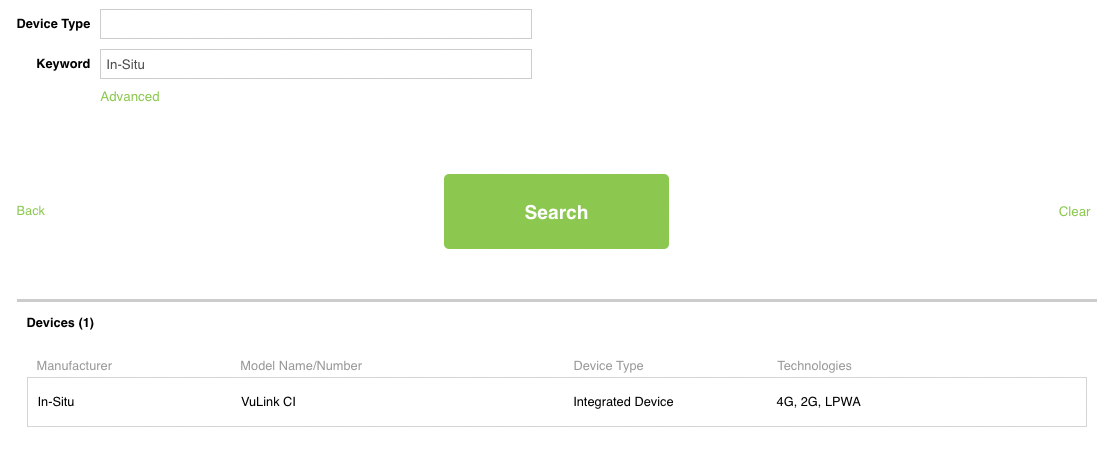
If my device is PTCRB certified, do I need other certifications?
Carriers like Verizon and AT&T have their own unique certification processes. If you use a SIM card from one of these carriers, your device needs to pass their certification process as well. However, if you use a roaming SIM, such as emnify’s global IoT SIMs, you just need PTCRB certification to connect to these networks.
Get ready to launch your device in the US
Whether you’re only planning on deploying in the US or you’re going global, emnify has the tools and tech you need to keep your devices connected. Our global IoT SIMs let you connect to more than 540 networks in over 190 countries—including four major carriers in the US. It’s all made possible by a single SIM card, and you’ll never have to swap SIM cards again.
Our connectivity management platform gives you complete control over your connectivity. By integrating with your tech stack and cloud service provider, emnify enables you to automate processes and leverage greater visibility into your devices’ network connections and data consumption.
Want to try it for yourself? Start a free trial today. We’ll send you two test SIMs with prepaid data plans and 60 days of complete access to our platform.
Get in touch with our IoT experts
Discover how emnify can help you grow your business and talk to one of our IoT consultants today!

If you want to understand how emnify customers are using the platform Christian has the insights. With a clear vision to build the most reliable and secure cellular network that can be controlled by IoT businesses Christian is leading the emnify product network team.
